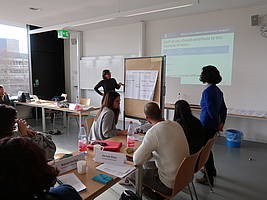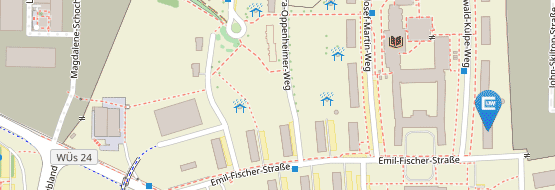Case Study in Continuing Professional Education



A teaching case is not a ‘case study’ of the type used in academic research. The analytical work of explaining the relationships among events in the case, identifying options, evaluating choices and predicting the effects of actions is the work done by students during the classroom discussion.
Aims of the method/strategy
The aim of the strategy is to present case studies taken from a practical, real-world example to illustrate a theoretical concept. It is important to have cases that deal with the same overarching topic but look at it from different angles; the cases should be selected in a way that both similarities and differences can be identified.
Setting
The setting is a classroom or meeting room with mobile chairs and tables. A large and visible space on the wall should be available (e.g. for a slide projector).
Type and name of the course, curriculum, number of students in which the teaching practice was exercised:
We applied this approach in several workshop settings, but it can be used in a wide spectrum of occasions whenever case studies serve the purpose to showcase examples from the practical world. To be able to accommodate group work, the groups should be around 6-10 people.
Description of the method/strategy
Prior to the workshop, information about the general topic will be made available to the participants.
- Setting the context: At the beginning of the workshop, the purpose and aim of the workshop and the overall topic are explained. Questions are clarified. The processes of the different steps in the workshops as well as the time frames are being outlined (5-10 minutes).
- Providing background: In a short presentation, the facilitator explains the background/underlying problem/point of departure and outlines on a more general level the concept/approach (10 minutes).
- Group work: Based on this background, the participants are divided into two groups; two short case studies (about 1 page) illustrating the practical application of the theoretical concept/approach are provided (10 minutes).
- The group members read the case study and summarise the list of the case; guiding questions are provided, and key aspects are put down on a pin-board by the participants of the group (20 minutes).
- Presentation of results: Each group (ideally, each member of the group) presents the case studies to the other group (10 minutes per group, 20 minutes in total).
- Questions, identification of differences and similarities: The facilitator helps by asking suitable questions to identify similarities and differences between the cases (10 minutes).
- Summary and lessons learnt: The facilitator, jointly with the group, elaborates the reasons for the similarities and differences. Finally, participants discuss lessons learnt and consequences for their own work (10 minutes).
Materials required
- slide projector for background information,
- case studies printed out for each participant,
- pin-board and equipment (paper, needles, etc.),
- possibly: blackboard to take notes.
Origin and theoretical framework
Case studies area research method involving an up-close, in-depth, and detailed examination of a subject of study (the case), as well as its related contextual conditions. The example deals with illustrative case studies. These are primarily descriptive studies, typically using one or two instances of an event to show the existing situation. Illustrative case studies primarily serve to make the unfamiliar familiar and to give the participants a common language about the topic in question.
Risks and advantages
The strength of this approach is that it provides examples of practical application to a theoretical discussion. Thereby, it illustrates and underpins the theoretical context in question.
Advantages:
- Participants work in a small group; the approach encourages active participation of those that need more time to speak up in a new environment.
- Helps to understand the theoretical context better and sets it into a practical setting.
- Helps to reflect on the theoretical concept and compares a group’s own case with the case of the other group; similarities as well as difference put the theoretical topic into a broader and more reflective scope.
Risks:
- The cases must be well selected to make sure they deal with the same topic and still illustrate similarities and differences.
- Time management: It’s easy to spend a lot of time in group work and then risk having little time for reflection, comparisons, and, most importantly, the lessons learnt.
- The facilitator must give participants enough freedom to develop their own ideas and still guide them towards a meaningful comparison that allows for drawing lessons from the case.
Possible variations
We used this in international workshops with participants from different regions/countries to develop a full understanding of a theoretical concept. The number of participants is quite small; it could also be done with more participants and more working groups. However, if all of them deal with different examples, the overall time frame needs to be adjusted.
Other examples where you think it could be used
Generally speaking, case studies can be used in contexts where theoretical subjects require a practical example to help participants better understand the gist of the theoretical concept. However, the case studies must be plausibly linked to the theoretical framework and must allow for drawing conclusions in a broader context.
Recommendation
Even though case studies describe individual cases, they must be presented in a way that the key experiences can be transferred to other contexts. The transferability and the presentation of the individual case on a more generalised level are crucial for the learner’s experience.
Annexes
Pedagogy in Action –The SERC Portal for Educators:
https://serc.carleton.edu/sp/library/cases/index.htm
Contact persons
Thomas Lichtenberg (Lichtenberg@dvv-international.de)
Johann Heilmann ( Heilmann@dvv-international.de )


